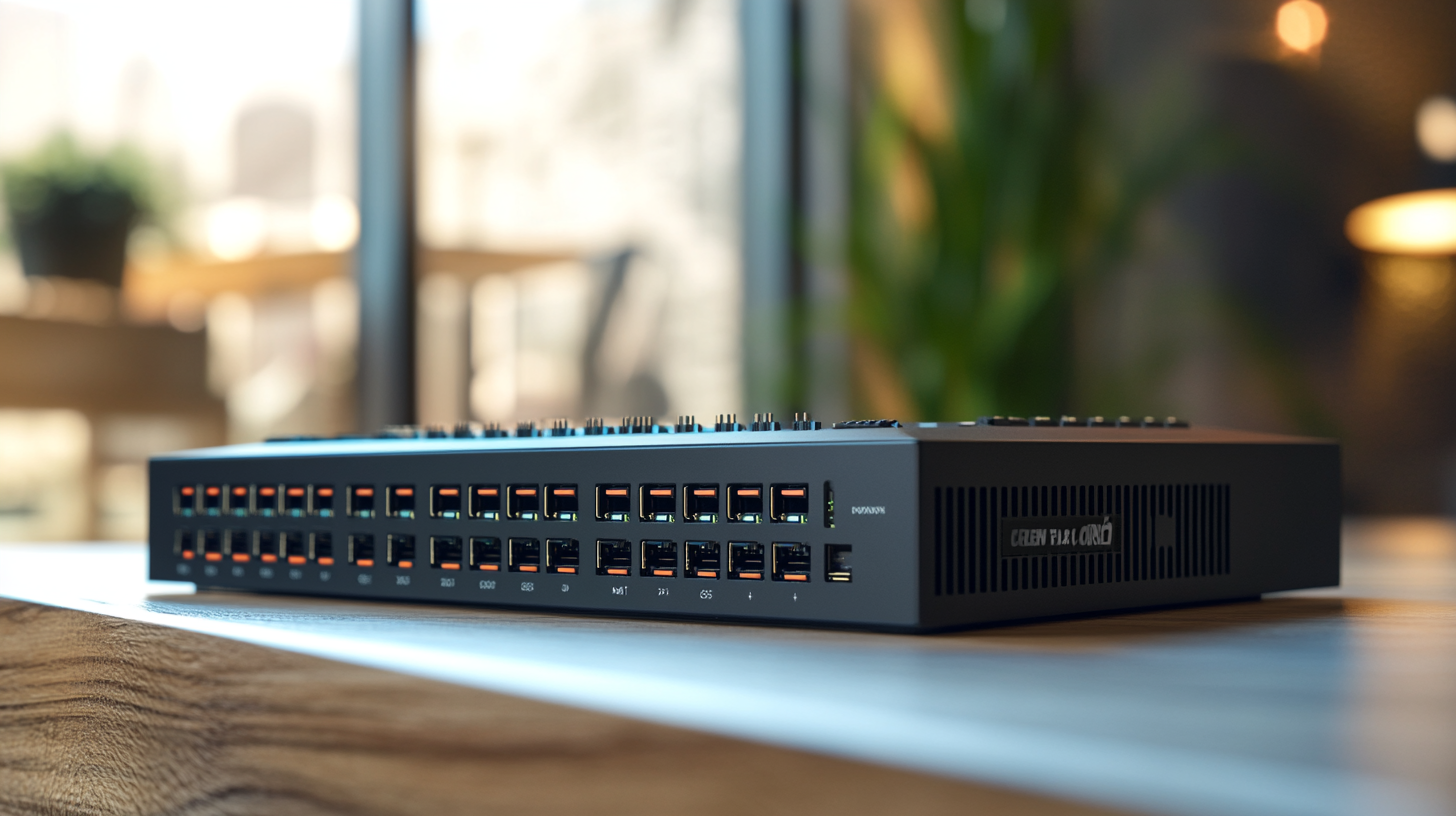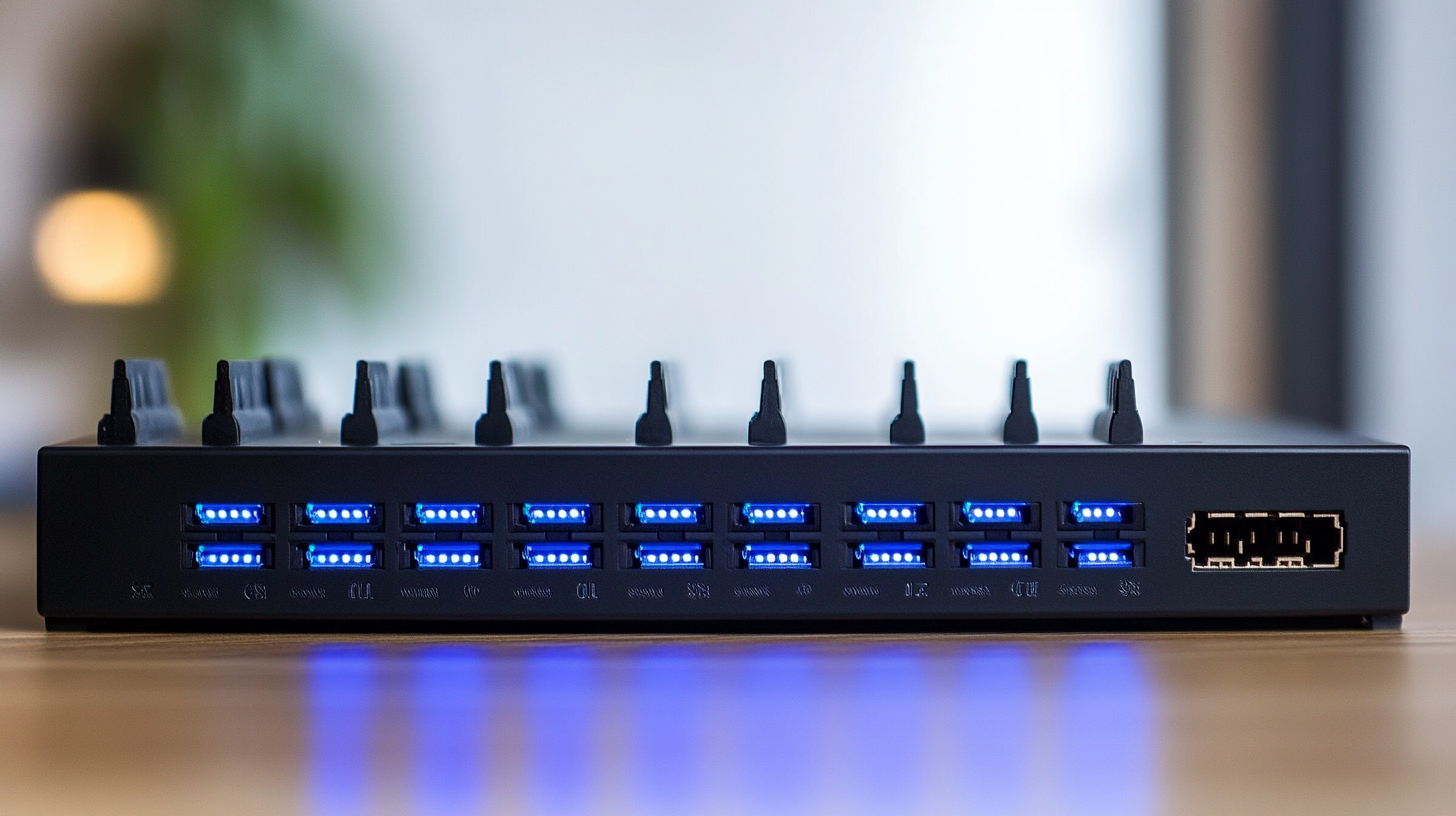
- hasivo@hasivo.com
- Mon - Sat at 7:00AM to 9:00PM
Leave Your Message

In today's increasingly connected world, the demand for faster network speeds has never been higher. According to a report by the International Data Corporation (IDC), global IP traffic is projected to reach 4.8 zettabytes per year by 2022, doubling the amount recorded in 2020. This surge in data traffic emphasizes the necessity for robust networking solutions, particularly as businesses and households continue to rely on high-speed internet for everything from cloud services to streaming applications. A reliable Gigabit Switch plays a crucial role in ensuring that your network can handle this demand efficiently.
Selecting the ideal Gigabit Switch for your specific network needs can significantly impact overall performance and productivity. Research from Gartner highlights that a well-optimized network infrastructure can improve operational efficiency by up to 40%. As the complexities of network design increase, understanding factors such as port configuration, managed versus unmanaged switches, and the scalability of your network infrastructure becomes essential. This article aims to guide you through the key considerations when choosing the best Gigabit Switch for your network, ensuring that you make an informed decision tailored to your unique requirements.

When considering the enhancements to your network, understanding gigabit switches is crucial. Gigabit switches are networking devices that connect multiple devices within a Local Area Network (LAN) and facilitate the transfer of data at speeds of up to 1 gigabit per second. This significantly outperforms older network technologies, enabling faster data transfer and reduced latency, which is essential for activities like online gaming, streaming, and large file transfers.
The benefits of gigabit switches extend beyond speed. They operate using Ethernet cabling, which has long been the backbone of reliable network connections. A gigabit switch allows for better traffic management thanks to features like Quality of Service (QoS), which prioritizes critical network traffic, ensuring that essential applications run smoothly even in high-demand environments. Moreover, they are designed to handle a variety of port configurations, providing flexibility for small home networks or larger office setups.
For anyone looking to future-proof their network, investing in a gigabit switch can make a substantial impact. With the increasing demands of modern devices and applications, these switches not only support higher speeds but also provide the necessary infrastructure to scale as your network needs grow. Whether you’re a gamer seeking low-latency connections or a family streaming multiple devices simultaneously, a gigabit switch can significantly enhance your overall network performance.

When selecting a gigabit switch for your network needs, it's essential to focus on key features that can enhance performance and efficiency. The first factor to consider is the number of ports available. Depending on your network's complexity, you may require a switch with multiple ports to connect various devices seamlessly. For smaller setups, a compact switch like the SCALANCE X-000 is ideal; it offers a simple, space-saving solution that's perfect for machine networking.
Another crucial aspect to look for in a gigabit switch is its industrial-grade reliability. Devices such as the SCALANCE X-000 are designed for durability, ensuring that your network remains stable in demanding environments. Additionally, features such as power over Ethernet (PoE) support can simplify installations by allowing devices like cameras and access points to draw power directly from the switch, reducing cable clutter and enhancing overall efficiency.
Lastly, consider the switch's management capabilities. Managed switches provide advanced features such as VLAN support and network monitoring, allowing you to tailor your network configurations according to specific needs. By carefully evaluating these key features, you can select the right gigabit switch that guarantees optimal performance and scalability for your network.

When choosing the best gigabit switch for your network needs, understanding the difference between managed and unmanaged switches is crucial. Unmanaged switches are straightforward plug-and-play devices that require little to no configuration. They are ideal for simple networks where users need a reliable connection without the additional features. For instance, an unmanaged switch serves home networks or small offices effectively, allowing multiple devices to share a single internet connection effortlessly. This simplicity makes them a popular choice for users who prioritize ease of use over complex management features.
On the other hand, managed switches offer a wealth of features that allow for greater control and customization of network performance. These switches enable administrators to monitor traffic, set up VLANs, and prioritize network traffic, making them particularly beneficial in larger, more complex networks. With the ability to troubleshoot and manage connectivity issues proactively, managed switches are a solid investment for businesses that require enhanced security and performance monitoring. The choice between managed and unmanaged switches largely depends on the scale and demands of your network, whether you're running a home setup or managing an enterprise-level infrastructure.
| Feature | Managed Switch | Unmanaged Switch |
|---|---|---|
| Control and Configuration | Advanced configuration via software | Plug and play, no configuration needed |
| Cost | Generally more expensive | Budget-friendly |
| Use Case | Suitable for complex network needs | Ideal for simple and small networks |
| Network Monitoring | Supports network monitoring tools | Limited to no monitoring features |
| VLAN Support | Yes, allows segmenting network traffic | No VLAN support |
When selecting a gigabit switch for your network, one of the critical factors to consider is the port count. Understanding your current and future networking needs can significantly influence this decision. If your environment is rapidly expanding, choosing a switch with a higher port count will provide the scalability necessary to accommodate additional devices in the future. It’s essential to analyze how many devices you currently have and predict your growth; this will help ensure that your switch can support both your immediate and long-term requirements without the need for frequent replacements.
Moreover, network scalability is a fundamental aspect when evaluating gigabit switches. As networks grow, the demand for uninterrupted connectivity and high-speed data transfer increases. A scalable switch not only allows for the addition of more devices but also supports features that enhance network performance, such as VLANs and Quality of Service (QoS). An effective gigabit switch should seamlessly integrate with your existing network architecture, ensuring that you can expand your infrastructure with minimal disruption. Therefore, considering both the port count and scalability features will empower you to make an informed choice, creating a robust and future-proof network.
When selecting a gigabit switch for your network, budgeting plays a crucial role in achieving the right balance between performance and cost. Determining your budget starts with an understanding of your current and future network requirements. Does your setup need a simple switch for basic connectivity, or are you planning for a more complex configuration that requires advanced features? Clearly defining your needs will help prevent overspending on unnecessary features while ensuring adequate support for your devices.
Once you have a budget range in mind, research various models within that price point, weighing their features against your needs. Some switches offer additional capabilities, like Power over Ethernet (PoE), which is great for powering devices like IP cameras and access points. While these features may increase the upfront cost, they can lead to savings over time by reducing the need for additional equipment. Additionally, consider the longevity of the investment—choosing a slightly more expensive model with higher reliability can save money in the long run by minimizing downtime and replacements.
Finally, don’t overlook the importance of warranties and customer support. A switch that is backed by a solid warranty can provide peace of mind, ensuring you won’t face unexpected repair or replacement costs shortly after purchase. Balancing initial costs with long-term benefits and support will help you choose the best gigabit switch that meets your networking needs while staying within your budget.